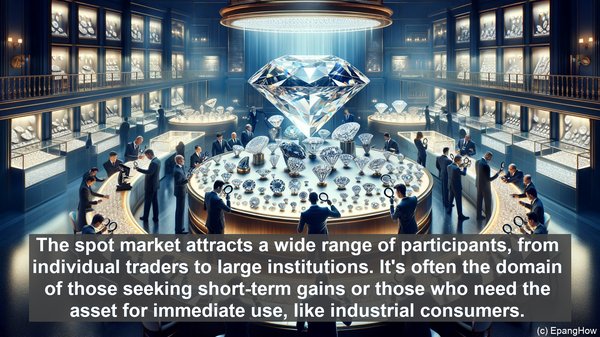Introduction: The Two Pillars of Trading
Hello everyone, and welcome to today’s discussion on the spot market and the futures market. These two pillars of trading play a crucial role in the world of finance, enabling transactions and shaping market dynamics. But what sets them apart? Let’s dive in and find out.

Spot Market: The Realm of Immediate Transactions
The spot market, also known as the cash market or the physical market, is where assets are bought and sold for immediate delivery. It’s the realm of instant gratification, where transactions occur ‘on the spot,’ hence the name. This market is highly liquid, with prices determined by the forces of demand and supply. It’s the go-to for traders looking for quick deals and those who prefer the tangibility of owning the asset outright.

Futures Market: Contracts for the Future
In contrast, the futures market deals with contracts for future delivery. Here, buyers and sellers agree on a price and quantity for an asset, but the actual exchange happens at a later date. These contracts, often standardized, provide a glimpse into the market’s future expectations. They serve as a tool for hedging against price fluctuations, allowing businesses and investors to mitigate risk. The futures market is known for its leverage, enabling traders to control a larger position with a smaller upfront investment.
Price Determination: Spot Market vs. Futures Market
When it comes to price determination, the spot market is driven by the immediate forces of demand and supply. It’s a reflection of the asset’s current value, influenced by factors like market sentiment, economic indicators, and geopolitical events. On the other hand, the futures market’s price is influenced by the expected future value of the asset. It takes into account factors like interest rates, storage costs, and the time remaining until the contract’s expiration. This forward-looking nature of the futures market makes it a valuable tool for price discovery and risk management.
Market Participants: Diverse Profiles
The spot market attracts a wide range of participants, from individual traders to large institutions. It’s often the domain of those seeking short-term gains or those who need the asset for immediate use, like industrial consumers. In contrast, the futures market sees a mix of speculators and hedgers. Speculators aim to profit from price movements, while hedgers, like farmers or manufacturers, use futures contracts to protect against adverse price changes. This diversity of participants adds depth and liquidity to both markets.
Market Dynamics: Volatility and Stability
Due to its immediate nature, the spot market can be more volatile, with prices reacting swiftly to new information or events. This volatility can present opportunities for quick gains but also carries higher risks. In contrast, the futures market’s standardized contracts and longer timeframes can bring more stability. It’s a market where participants can plan and strategize, knowing the terms of the contract in advance. This stability is especially valuable for businesses that rely on price predictability for their operations.
